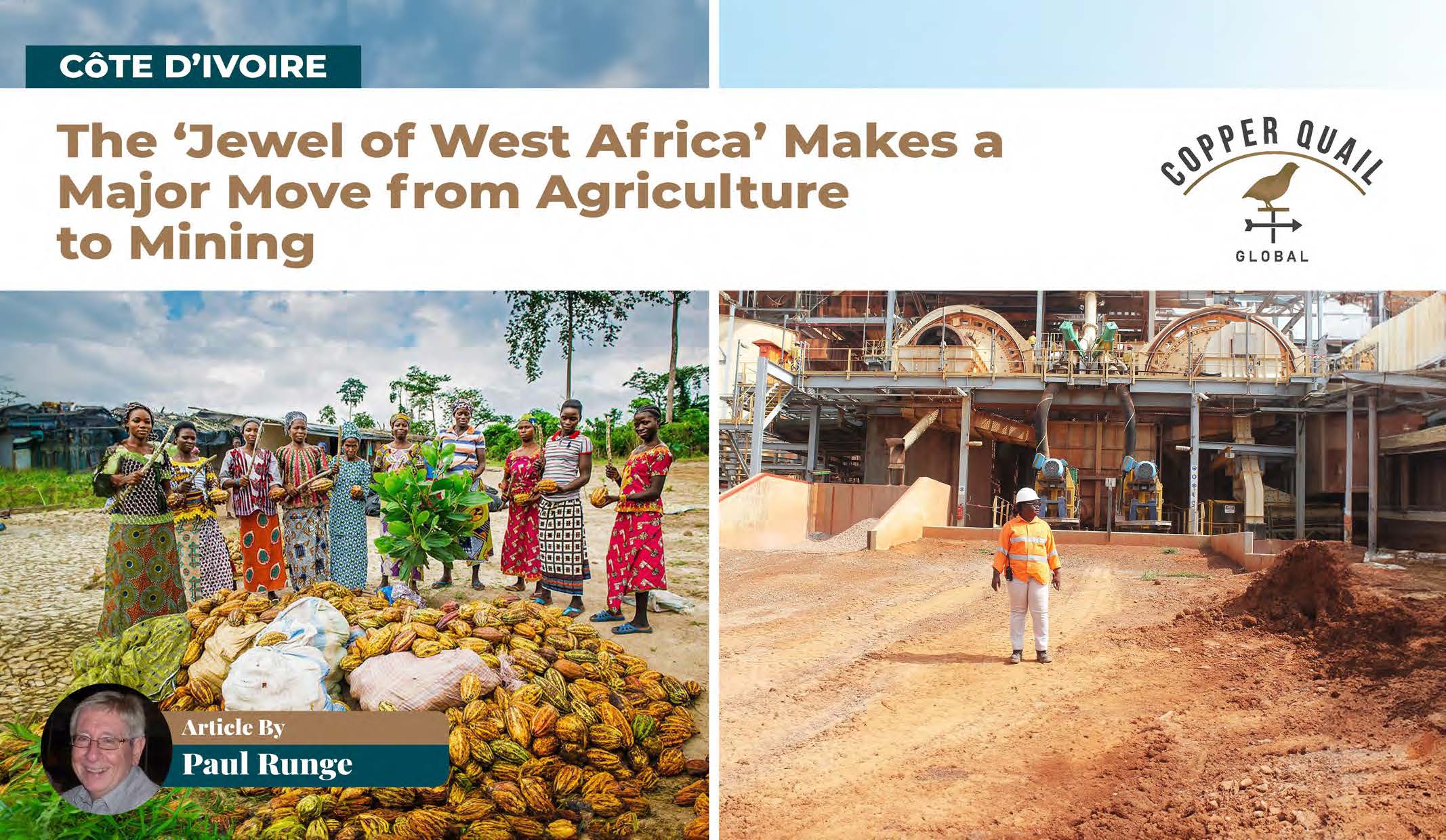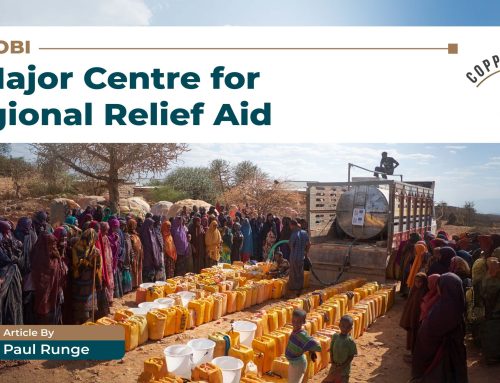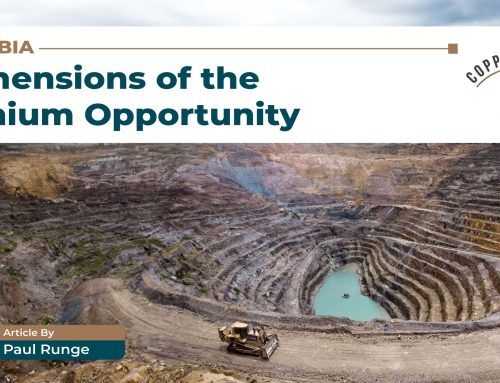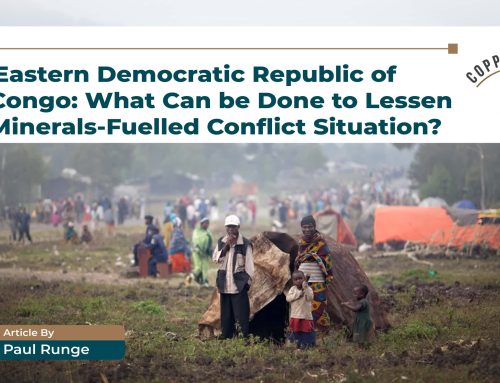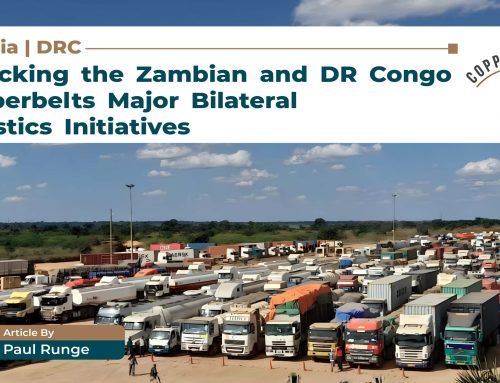Côte d’Ivoire: The ‘Jewel of West Africa’ Makes a Major Move from Agriculture to Mining
ONCE THE ‘JEWEL OF WEST AFRICA’
I first visited Côte d’Ivoire way back in 1982. It was my first foray into West Africa and I was alone without any bookings and feeling pretty nervous. My anxiety was heightened by the chaos on my arrival at Abidjan airport – young ragged touts pulling at my luggage and demanding “monnaie patron.” Then my taxi was stopped by a scary police roadblock and inspection on the road to the city.
Was this really the ‘jewel of West Africa’ that I had heard so much about? The country with the best infrastructure in the region and yet with an economy strongly based on agriculture, mainly cocoa and rubber? However, when I opened my sixth-floor hotel room window, there was Abidjan – a sparkling lagoon city with long bridges with ornate Paris-style Lamp posts and a heavy but smooth=flowing traffic. My trust renewed!
OVERWHELMINGLY DEPENDENT UPON AGRICULTURE
This is the country renowned as the largest cocoa producer in the world (although there is strong competition from neighbouring Ghana). And endowed with so many more agricultural riches – coffee, cotton, cashews, palm oil, bananas etc etc.
A few years later, I was leading a business mission to the country and on the road from Abidjan to Yamoussoukro, I asked our driver to stop the car so that he could show us the strange beans produced by the many rows of trees we were passing. (South Africans know nothing about cocoa! How could the bitter beans we tasted produce sweet chocolate? Why was the country not producing its own chocolate? A local chocolate industry has now been initiated.)

BUT THERE WERE BAD TIMES
The civil war from 2002 to 2007 was a shock for the region and the continent. The African Development Bank had established its headquarters in Abidjan because Côte d’Ivoire promised long-lasting stability! But the conflict forced it to move for a few years to Tunis.
The troubles were just beginning when I went for a jog from my hotel in Abidjan’s Plateau business area. It was hot and muggy, so I did not take my passport because I thought the humidity would ruin the precious document. But there were groups of soldiers all over in the streets and I was stopped and asked where I was from and why I was not carrying any identification? My feeble explanations did not work and I was pushed around for an hour or so before an officer with much confetti on his shoulders told me to “foux le camps” (something like “scram” but a little less polite) and I ran as fast as I could back to safety.
NOW A COUNTRY DOING WELL
Peace returned and over the past few years, Côte d’Ivoire has placed itself among the countries with the highest growth rates in the world. It’s GDP in 2021 reached just over US$ 70 billion and the GDP per capita attained an impressive US$ 2 593. And the African Development Bank is back!
AND NO LONGER SO DEPENDENT ON ITS CROPS AS MINING DEVELOPS
The Fraser Institute recently rated Côte d’Ivoire as the best mining destination in West Africa. The country’s mineral wealth was previously largely ignored but is now experiencing a sudden surge. It has a long list of resources including manganese, bauxite, iron ore and diamonds but the view has been that much is not commercially exploitable.
Gold is the big mover! In very recent years, a good number of gold projects are being developed and some have started operations. This list is also long: Séguéla, Koné, Tongon, Abujar, Lafigué, Mankono, Yaouré, Sissingué, Tanda-Iguéla etc etc. The developers have been and are overwhelmingly from Australia (Perseus, Tietto, Lycopodium among others) and Canada (Barrick, Fortuna, Montage) – the two major homes of junior mining. The latest project that I have picked up is a gold exploration programme over a large area being undertaken by the Australian junior, Turaco Gold.
Other resources are also being looked at. Another Australian company, Ricca Resources is involved in the development of the country’s first lithium project. The state mining development company, SODEMI is investigating a rare earths venture.

THE DEVELOPMENT OF A SPECIAL MINING PORT
Most of the country’s mining resources are in the west of the country bordering Liberia, Guinea and Mali where major iron ore projects in particular are underway. The Ivorian government is developing the long-standing cocoa and fishing port of San Pedro on the far west coast to maximise the benefits of proximity to these rich national and regional sources. The San Pedro Development Programme includes a bulk minerals handling plant at the port so that the minerals can be effectively exported. It also includes a rail programme that will link the local and regional mines to the port and enable large-scale transport of resources.
A few years ago, I led a business mission to San Pedro and we found that the projects included far more than the mining facility. The town itself will be developed to accommodate its expected rapid growth. More hotels, more offices, more housing, more and better road links, power and water supply etc.
AND SO …
Côte d’Ivoire is a ‘jewel of West Africa’ again and simply cannot be ignored.


